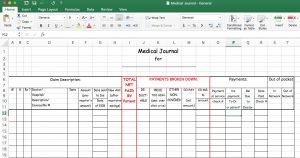Recent news and updates
Guest Blog: When You Should Consider Braces for Crooked Teeth Problems After 50
As you grow older, there’s a chance that you might start to have crooked teeth problems. And if so happens, then it is important that you consider orthodontic treatment like teeth braces to fix crooked teeth problems to make sure that it doesn’t lead to other health problems.
How Do Your Teeth Become Misaligned as You Grow Older?
The support structures that once kept your teeth in place, like the ligaments and muscles in and around your mouth, weaken with age. Jawbones, like any other bones in your body, are more prone to become dense and lose minerality too.
Other reasons like genetics, poor oral hygiene habits, or not eating the right nutrients can take its toll and contribute to having crooked teeth.
What are the Crooked Teeth Problems?
- Crooked teeth can affect your dental health and overall health in a variety of ways. Since it’s harder to brush or floss with crooked teeth, crooked teeth can cause many oral problems like:
- Crooked teeth are harder to clean and can cause dental plaque, which can contribute to problems like yellow teeth and bad breath.
- Food particles are more likely to get lodged into your teeth and cause plaque. Plaque can cause the structure around your teeth to weaken due to a bacterial infection. This infection is known as periodontal disease.
- Crooked teeth can also cause speech problems. People can only pronounce words because of the teamwork of the teeth and tongue by creating sounds by curling or pressing lips against the teeth. If teeth are misaligned, sounds can come out wrong.
- Crooked teeth can also affect your overall confidence because of all of these problems.
What are the Treatments to Fix Crooked Teeth After 50?
Traditional Teeth Braces:
These old school teeth braces can correct the severest cases of the most critical kind. These braces are cost-effective, but the metal brackets and wires can be a bit tricky to deal with.
Ceramic braces:
If you are conscious about wearing traditional metal teeth braces, ceramic braces might be the right choice for you. They match the color of your teeth, so they are less prominent when you smile, and you don’t have to be conscious of them. But this comes at a cost. They cost a bit more than traditional teeth braces.
Aligners:
If you are very conscious about how your teeth look in braces, then aligners are the right option for you. These clear aligners are almost invisible on your teeth, so they are practically unnoticeable by other people when you laugh or smile.
These can be used to correct mild to moderate teeth misalignments, and cost a lot more than metal or ceramic teeth braces.
If you have misaligned or crooked teeth, it might be best for your oral health and overall well-being to get your misaligned teeth treated as soon as possible. For choosing the right teeth straightening option for yourself, remember to pick the orthodontist you feel most comfortable with and can guide you accordingly.
Author Bio:
Creating perfect smiles is what Dr. Satish Pai is committed to. An orthodontist by profession, he believes that a perfect smile is a powerful part of a person’s personality. When he is not working hard on perfecting his patients’ smiles at Putnam Ortho, he is busy writing engaging articles about everything related to healthy and perfect smiles. His other passions include golf, yoga and surfing. Spending time with his family always brings a smile on his face.





